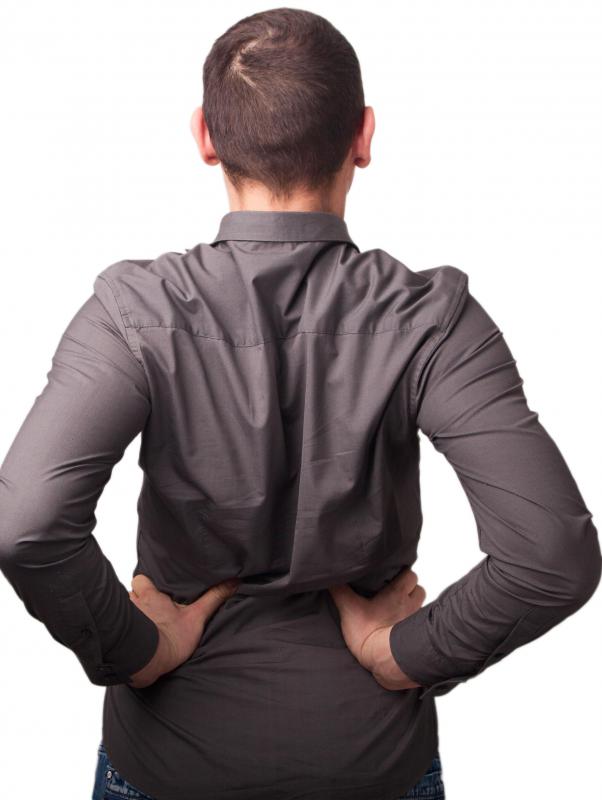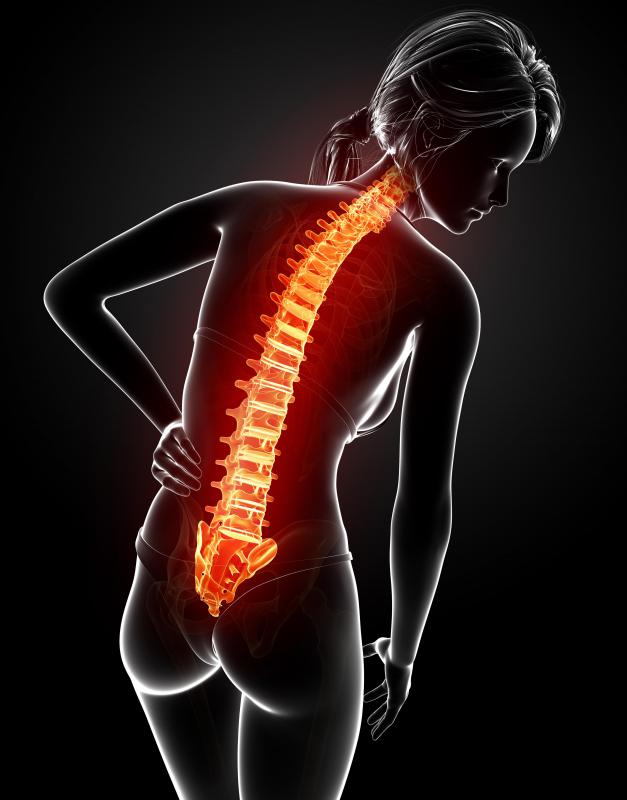At WiseGEEK, we're committed to delivering accurate, trustworthy information. Our expert-authored content is rigorously fact-checked and sourced from credible authorities. Discover how we uphold the highest standards in providing you with reliable knowledge.
What Is the Posterior Longitudinal Ligament?
The posterior longitudinal ligament is a long and dense ligament in the spine. It runs from the top of the spine down to just above the hip and traverses the vertebrae of the back. Its main functions are to prevent injury by limiting the amount of flexion — or forward flexibility — the back is able to achieve, and to help protect the spinal cord. The posterior longitudinal ligament is made up of a dense group of smooth ligament fibers and contains several layers, depending on whether it is inside or between the vertebrae.
One of the most important ligaments for stability and protection in the spine is the posterior longitudinal ligament. This ligament is found in something known as the vertebral canal, which also is called the spinal canal. The spinal canal is the space inside the bones of the back through which the spinal cord travels. It is a long ligament that runs from the top of the spine, originating from a vertebra known as the axis, down to the bottom of the spine, to a part of the body called the sacrum.

As it runs through most of the vertebrae in the back, the ligament has a distinctive shape. It is wider and thicker the farther up the spine you go, specifically in the spine's thoracic region. Within the body of each of the vertebra, the ligament is thin; in between the vertebrae, in an area known as the disc space, it is wider.
The function of ligaments is usually to stabilize the surrounding joints and bones. While the posterior longitudinal ligament provides stability in the spine, it also acts to protect the spinal cord. The spinal cord is essential for movement and function of the entire body, so this extra protection is important. Aside from protection, the posterior longitudinal ligament also helps to limit the amount of flexion in the back. This stops the back from bending forward beyond a safe range.

Along with the posterior ligament, the back also has an anterior longitudinal ligament. This runs down the front of the spine. It is different from the posterior longitudinal ligament in shape, because it isn’t as wide in the gap between the vertebrae. It is found on the opposite side of the spine and helps to limit the extension of the back, which involves a person bending backward, to complement the flexion involved in bending forward.
AS FEATURED ON:
AS FEATURED ON:














Discuss this Article
Post your comments